Menu
Sometimes, performing a successful sewer line repair job by yourself can easily be accomplished. Depending on several factors, all you need is the proper guidance and the right tools for the job.
You may not find the right tools here, but we’ve definitely got the proper knowledge you will need to learn how the sewer line repair process works.
Let’s dive in and uncover how much it costs to repair a sewer line, what tools you need, when to do it, and much more.
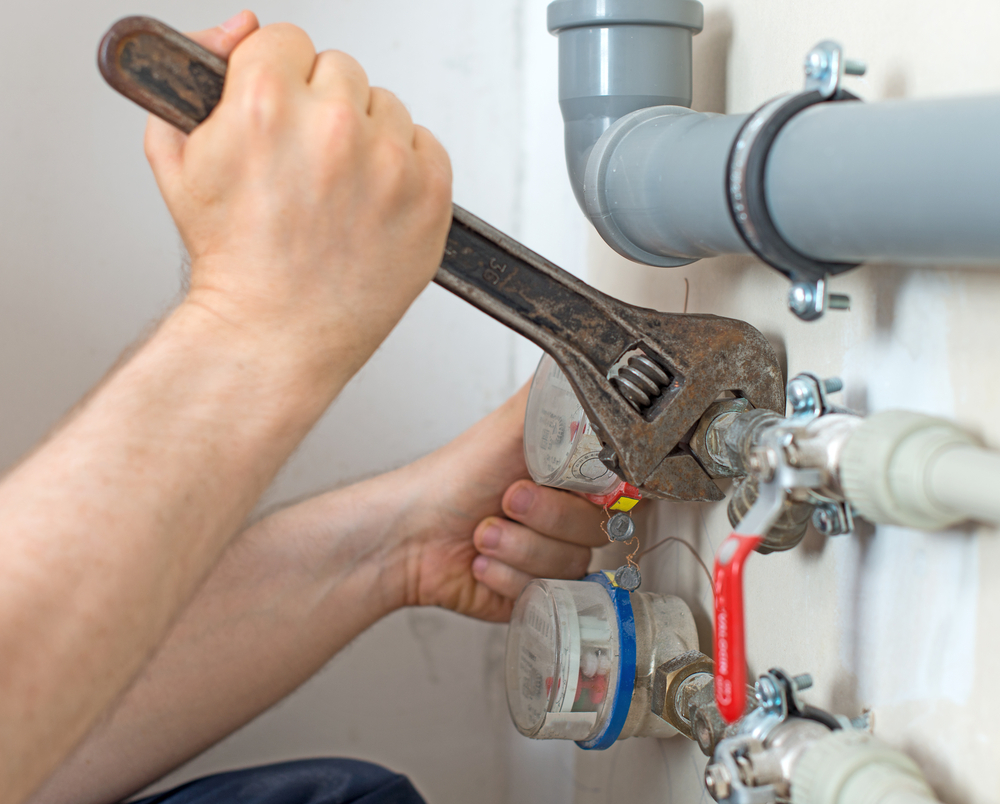
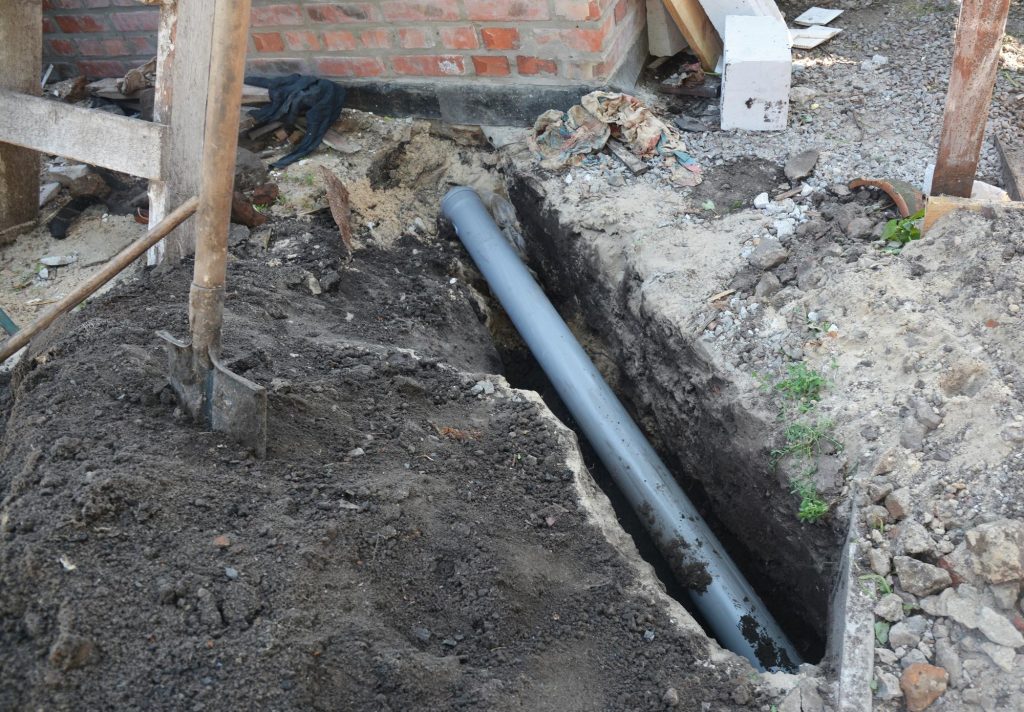
Even though it always depends on several factors, in theory, you can do some sewer line repair jobs yourself.
Considering you have the proper equipment, and the right knowledge, you can repair sewer line cracks and unclog pipes while saving yourself some money.
What’s also important to know is that there are different types of issues that can arise with sewer lines. As a result, sewer line repair by yourself may not always be the best opinion.
A few of the most common fixes that you’ll have to execute include sewer line tree root removal, pipelining, and pipe bursting. Out of these three, pipelining is the simplest and most cost-efficient method of sewer line repair if the pipe is cracked.
A couple of signals that will immediately show you have sewer line issues include foul smells in your home, cracks in your foundation, backup of sewage, slower drains, and similar.
The best course of action is usually to call for sewer line repair services to take a look and let you know what the problem is and how much it would cost to fix it. If it’s just a main sewer line clog, it usually costs between $350 and $600 to fix it.
On the other hand, if you know a thing or two about sewers, you can check the problem yourself first. If you don’t think you can handle it yourself, then you should call for professionals.
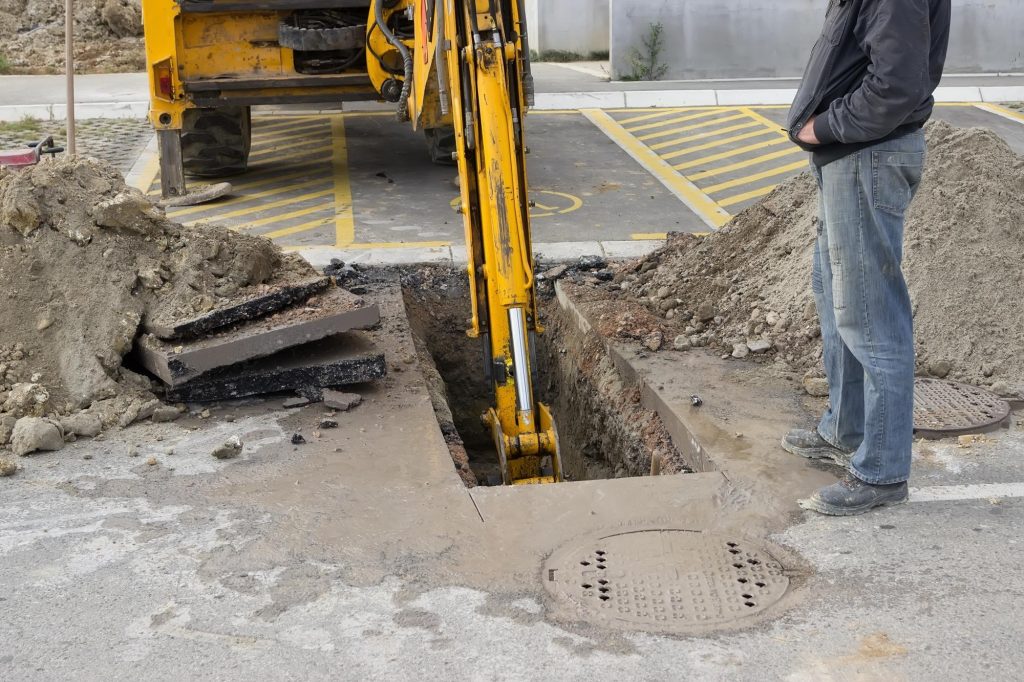

As we already mentioned, how much a sewer line repair will cost depends on the type and extent of the damage.
On some occasions, this will only cost a couple of hundred dollars. However, in extreme cases, costs can accumulate to several thousand dollars easily.
Let’s have a look at how much each type of sewer line repair costs.
Sewer line pipe bursting usually involves expensive special equipment and a trained professional to execute. It’s a highly effective way of unclogging a sewer line completely.
It can cost anywhere between $3000 to $20,000 for a full repair or replacement. The cost per foot is often between $60 – $200.
For those reasons, it’s unlikely that just about anyone would be able to do this job themselves. An expert with special gear will almost always be needed for sewer line pipe bursting.
Sewer line root removal is one of the less expensive types of sewer line repair. On a good day, this will cost you somewhere between only $100 and no more than $600 total.
There can also be additional charges if you decide to have a sewer line camera inspection. This isn’t always necessary but it may come in handy to see if there’s any other problem with your sewer line.
Relining, also known as pipelining, is a quick and affordable way to fix minor damage like cracks in your sewer line. On average, this sewer line repair method costs $160 per foot.
Keep in mind that this isn’t the same as pipe bursting. More often than not, you won’t have to pay for too many feet of repair. Cracks usually aren’t that big or too spread out if caught on time.
As mentioned before, sometimes you can also do sewer line repair yourself. Of course, this depends on how bad the problem is.
If it’s just a small sewer line crack, you should be able to do it yourself.
On the other hand, if extensive pipe bursting or thorough sewer line inspection is required, then you will have no other choice than to hire a professional with the right type of special gear.
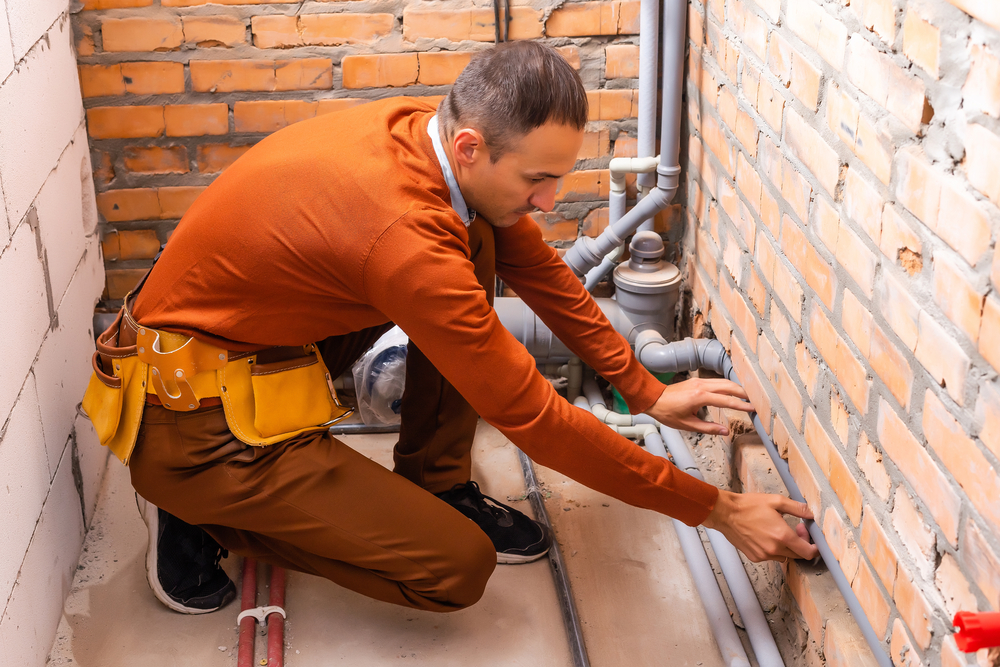
Even though there’s nothing stopping you from repairing your sewer line yourself, you should know that you can often do more harm than good. Unless you really know what you’re doing, it’s suggested that you let an expert handle it.
On another note, as you may already know, homeowners insurance does not cover fixing broken sewer pipes or sewer line root removal. For that reason, it may pay off to fix the problem yourself without paying hefty amounts of money.
The choice is yours. It all depends on whether you think you can get the job done or not.
The best course of action if you want to fix a crack on your sewer pipe is to patch it up using strong tape intended solely for these types of pipes. This is a great solution until permanent repairs can be made.
Even though high-quality patches will last a long while, it’s still not ideal to rely solely on them forever. If you had the right equipment, you could also do a pipe relining yourself fairly easily.
Oh, and yes, even a cracked clay sewer pipe can be patched just the same as normal pipes.
You can easily remove roots from the sewer line yourself by pouring special root killer products like a copper sulfate formula down the sewer drain. This sewer line repair method works best if the root problem is in its early stages.
If the symptoms are worse and your sewer line is totally clogged up, then chances are this technique won’t do you any good. In such a case, calling a professional to unclog the entire pipe is your best course of action.
If you have trees, bushes, hedges, or similar plants in your yard, chances are that eventually, roots will grow towards the sewer line. As a result, you should do this type of preventative maintenance even if you don’t see any clear signs of roots in your sewer pipes.

Replacing a sewer line is a complicated job that almost always requires special equipment.
In theory, you could replace a sewer line in your yard yourself given that it’s not too deep underground. However, most of the time it’s much safer and more effective to have professionals take care of it.
Here is a step by step process of what it takes to replace a sewer line:
The first step towards replacing a sewer line is to find the sewer line and map out its length.
Professionals do this by threading a camera through the entire sewer line and measuring the depth using a special radio transmitter tool.
Next up is digging the trench and uncovering the sewer line. The hole can be anywhere between 1.5 and 6 feet deep. If it’s the latter, you may need heavy machinery to do the digging, as doing it by yourself with a shovel can take a lot of time.
Oftentimes you may find roots as you dig. If the roots are bigger, you also may require a chainsaw to cut them off and continue digging.
Lastly, if there’s concrete above your sewer line, a sledgehammer will also come in handy to start the process.
Then, it’s finally time to throw away the old pipes and install the new ones. This is actually pretty straightforward.
All you have to do is simply disconnect or cut the pipe that connects the house and the main city sewer. Professional services will often make sure to improve the pipe bed with gravel and then install the new pipe.
Lastly, simply connect the new pipe to the city sewer and the house and you’re done.
All that’s left now is to fill the hole back up. However, don’t just throw in all the dirt at once.
You have to compact the soil as you pour it in. This is usually done with a soil compactor tool but it can also be relatively easy to do it with a shovel.
The symptoms for sewer line repair and replacement are often quite similar. The only way to know if it’s time for a replacement is when you check the sewer line for damage.
Until you do that, here are some symptoms that could indicate the need for sewer line replacement:
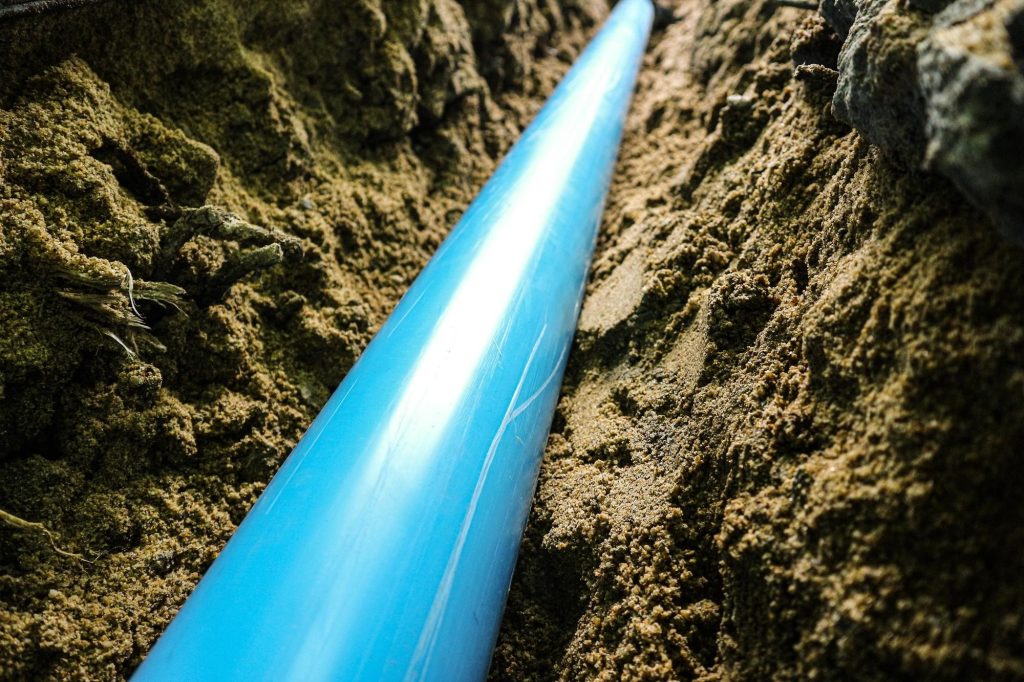
Usually, sewer lines last about 80 years on average. However, various factors can significantly affect their lifespan.
Outdoor elements can also damage the pipes.
In addition, the lifespan of a sewer line depends on the type of material it is made of. PVC pipes can last for even over a century. On the other hand, Orangeburg pipes, for example, only have a lifespan of up to 50 years.
Another popular example is clay sewer pipes. They usually have a lifespan of between 50-60 years. However, clay pipes can also be patched or relined to prolong complete replacement.
Regardless of how expensive it can get, getting professional assistance from a sewer company will almost always be worth it.
Unless you know exactly how to repair or replace a sewer line, calling in an expert can save you both a lot of hassle and money in the long run.
Trying to do sewer line repair yourself without knowing what you’re doing can cause further damage. As a result, you will most likely end up paying more later on than what you would have paid previously.
Additional reasons include the special equipment that sewer companies have.
Some jobs require digging deep trenches and special machinery to get it done. Unless you have all of that special equipment in your tool shed, it’s highly unlikely that you will effectively repair or replace your sewer line.
Now you know all the work and knowledge it takes to effectively execute sewer line repair. You also know what signs to look for if you think your sewer line needs repairing or replacement.
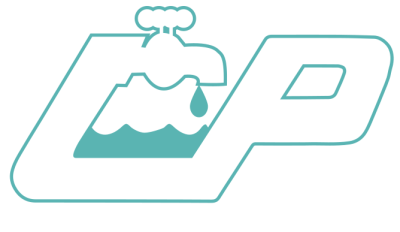
Carolina Plumbing & Water Systems
719 Mattress Factory Rd,
Mebane, NC 27302
919-563-3709
Hours of Operation
M-F: 7:30 AM – 4:00 PM
Emergency Services Available: 24/7
Serving These Cities
Mebane, Chapel Hill, Hillsborough,
Pittsboro, Burlington, Durham,
Carrboro, Efland, Graham
And all Surrounding Communities.



All Rights Reserved
| Cookie | Duration | Description |
|---|---|---|
| cookielawinfo-checbox-analytics | 11 months | This cookie is set by GDPR Cookie Consent plugin. The cookie is used to store the user consent for the cookies in the category "Analytics". |
| cookielawinfo-checbox-functional | 11 months | The cookie is set by GDPR cookie consent to record the user consent for the cookies in the category "Functional". |
| cookielawinfo-checbox-others | 11 months | This cookie is set by GDPR Cookie Consent plugin. The cookie is used to store the user consent for the cookies in the category "Other. |
| cookielawinfo-checkbox-necessary | 11 months | This cookie is set by GDPR Cookie Consent plugin. The cookies is used to store the user consent for the cookies in the category "Necessary". |
| cookielawinfo-checkbox-performance | 11 months | This cookie is set by GDPR Cookie Consent plugin. The cookie is used to store the user consent for the cookies in the category "Performance". |
| viewed_cookie_policy | 11 months | The cookie is set by the GDPR Cookie Consent plugin and is used to store whether or not user has consented to the use of cookies. It does not store any personal data. |